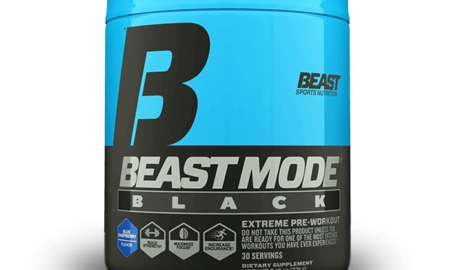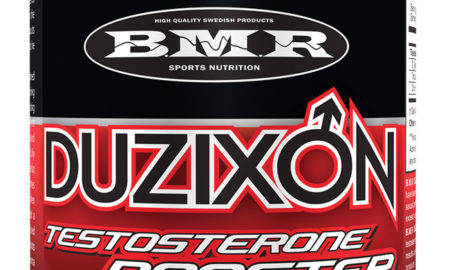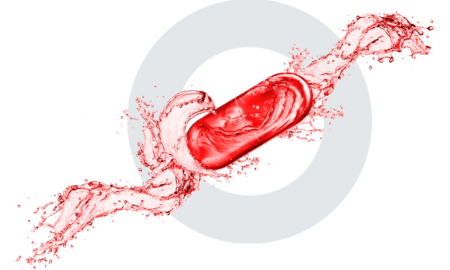It’s never been easy to get anabolic steroids legally. Soon after juicing became routine for athletes in the mid-1960s, steroid popularity rapidly increased. Back then, as today, most physicians knew next to nothing about the nuances of anabolic steroids. They were not prescribed in the typical medical practice, and when approached by an athlete for a prescription, most doctors would look up the drugs in their copy of the Physicians’ Desk Reference, which declared that steroids didn’t build muscle but merely added water weight. That was also the official stance of the medical profession at the time, so many doctors were reluctant to write prescriptions for steroids simply because they didn’t know much about them. The few who did usually admonished users about the importance of medical supervision.
Over the years, as anabolic steroids acquired a notorious reputation, the ease of obtaining them from medical sources dwindled to near nonexistence. The government aided the process by declaring steroids to be Schedule III drugs, which placed them in the same category as the active ingredients in marijuana and LSD. Obtaining steroids from a doctor required a triplicate prescription, one of which went directly to the government. If doctors were suspected of administering steroids too readily or too extensively, they were often prosecuted—which could mean a loss of medical license. It’s no wonder that most doctors today would sooner give up one of their children than write a prescription for an anabolic steroid.
Even so, athletes were undeterred in their quest for steroids. They turned to the black market, consisting of clandestine labs located throughout the world. In the beginning, most black market sources of steroids were pilfered directly from pharmaceutical companies and were consequently of high quality. In the 1970s many of the preeminent bodybuilders who trained at Gold’s Gym in Venice were having their drug supplies shipped in from reputable European companies, so no major safety issues were involved.
Unfortunately, things have changed for the worse over the years. Today many black-market drugs are “home brews” made under nonsterile conditions. They’re sold over the Internet by shadowy companies that demand either cash or credit card yet provide no address or phone number. If you don’t receive your order—it could be seized by customs officials—you’re simply out of luck, since such sales are illegal. You can’t turn to the government or police for help if you get ripped off.
Even worse, many black-market drugs don’t contain the ingredients listed on the labels. Some preparations may contain an actual anabolic steroid, just not the one ordered. Others may contain none at all. Or, as multiple studies have confirmed over the years, the drugs may be tainted by such contaminants as heavy metals or even bacteria, since they aren’t made under sterile lab conditions.
A story in the November 6, 2005, edition of the Hartford [Connecticut] Courant documented the quality of steroids purchased over the Internet. The reporter had ordered 13 drug samples from dealers in Poland, Spain and Moldavia. The drugs were analyzed by a lab and found to be of low quality. The samples were underdosed, overdosed or contained both drugs not listed on the label and impurities, among them lead, tin and arsenic. One sample contained a chemical used in plastics manufacturing. The drug that was labeled “Deca-Durabolin” actually contained testosterone propionate.
Another study analyzed drugs seized in a raid in Germany.1 Various anabolic agents were found, including anabolic steroids, clenbuterol, anti-estrogens and even some drugs to treat impotence, such as Viagra. In all, 70 products were tested. Of those, 18, or 25.7 percent, showed differences between what was stated on the drug label and the actual contents. The samples of Sustenon, which normally contains four types of testosterone, contained only three.
In 2007, the author of the popular book Anabolics, William Llewellyn, had 14 black-market-drug samples analyzed. More than 20 percent of the products contained heavy metal, while 35 percent were overdosed. Further testing revealed that 60 percent of the products contained unidentified steroid compounds. The poor quality of the injectable samples was reflected by the fact that 14 percent contained food-grade oil, the same type of oil that you can buy in a supermarket. It’s not meant to be used in injections.
Two years ago, a study presented at the American Society of Addiction annual meeting in Los Angeles underscored similar problems. It examined 217 previous studies that had analyzed the chemical composition of black-market steroids. The researchers found that about a third of the analyzed samples did not contain the ingredients listed on their labels. Even when the samples did contain actual anabolic steroids, 44 percent contained the wrong dosages, either higher or lower than the amount stated on the label. One sample had less than 1 percent of the listed dosage on the label, while another had five times as much. One in five of the samples was contaminated with heavy metals—lead, tin, arsenic.
In 2007 an unusual series of intramuscular abscesses, or localized infections, were noted in medical offices in Great Britain. That resulted in an analysis of drugs obtained on the black market.2 Of 38 injectable drugs and 19 oral drug samples analyzed, 53 percent, or 20, of the injectable drugs were counterfeit, and 21 percent, or four, of the orals were also counterfeit. Even worse, they were found to be contaminated with various strains of bacteria, which accounted for the muscle abscesses in steroid users. Four samples of the orals were labeled as stanozolol or Winstrol, yet only one contained the actual drug. Two other oral samples contained steroids not listed on the label, and one didn’t contain any active ingredient. The injectables fared a bit better. Out of 38 samples tested, 18 matched the label, another eight contained ingredients not on the label, and 12 contained no active drug. The drug listed as trenbolone enanthate actually contained trenbolone acetate. Three vials that were supposed to contain growth hormone had no active ingredients.
In a recent analysis of drugs obtained over the Internet, 10 popular Web sites that sell such drugs were analyzed for content and accuracy.3 The Web sites sold an average of 52.4 products each. None required any prescription for any of the products sold. Some sites required minimum and maximum purchases ranging from $100 to $2,500. All shipped by post, and only one promised a substitute order if the original was seized by customs officials. Four others offered refunds if the products were confiscated by customs agents. Payment options were credit card or cash transfers. The authors also noted that the dosing advice for various drugs suggested on many of the sites was far in excess of what was usually recommended in medical practice.
Add it all up and it’s clear that buying anabolic drugs over the Internet is a type of lottery in the sense that if you “win,” you get an actual drug with potency that matches what’s stated on the label. Those who lose may lose their money if either the shipment is seized by customs officials or the lab is raided and closed down, a frequent occurrence these days. You’re also a winner if the drug turns out to not contain any undeclared ingredients that could be hazardous to health, such as toxic heavy metals or bacteria. As the old saying goes, “You pays your money, you takes your chances.” For further information about underground labs and their products, check out Underground Anabolics by William Llewellyn and Ronny Tober.
References
1 Thevis, M., et al. (2008). Analysis of confiscated black market drugs using chromatographic and mass spectrometric approaches. J Ana Toxicol. 12: 232-40.
2 Graham, M.R., et al. (2009). Counterfeiting in performance and image enhancing drugs. Drug Test Analy. 1:135-42.
3 Cordaro, F.G., et al. (2011). Selling androgenic anabolic steroids by the pound: Identification and analysis of popular websites on the Internet. Scand J Med Sci Sports. In press.
Editor’s note: Jerry Brainum has been an exercise and nutrition researcher and journalist for more than 25 years. He’s worked with pro bodybuilders as well as many Olympic and professional athletes. To get his new e-book, Natural Anabolics—Nutrients, Compounds and Supplements That Can Accelerate Muscle Growth Without Drugs, visit www.JerryBrainum.com. IM




















You must be logged in to post a comment Login